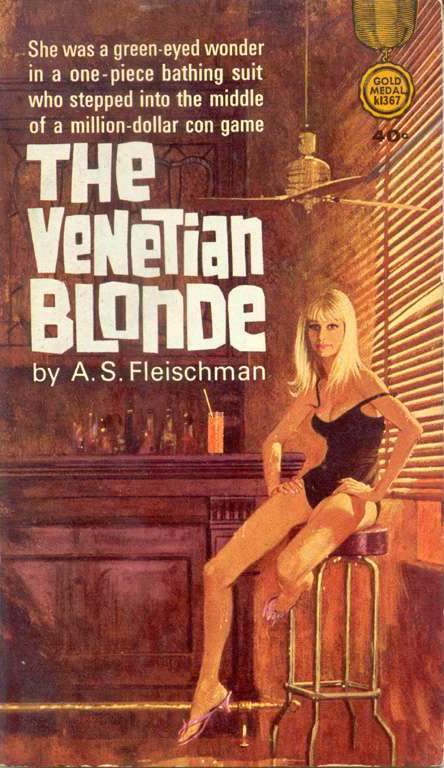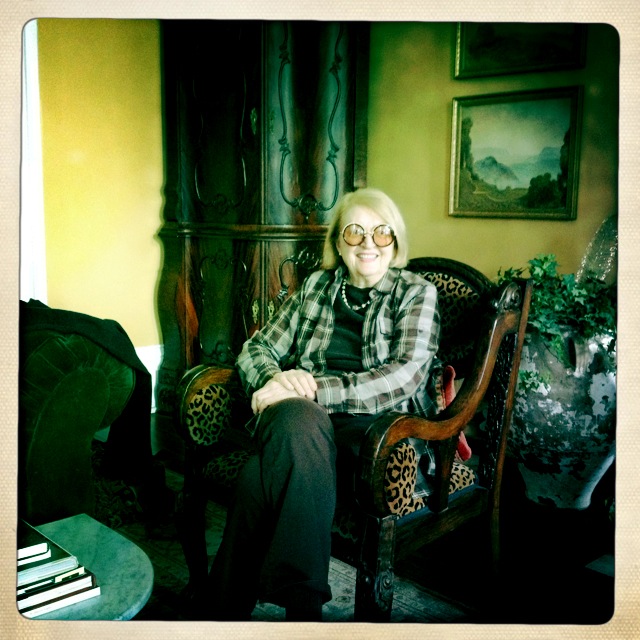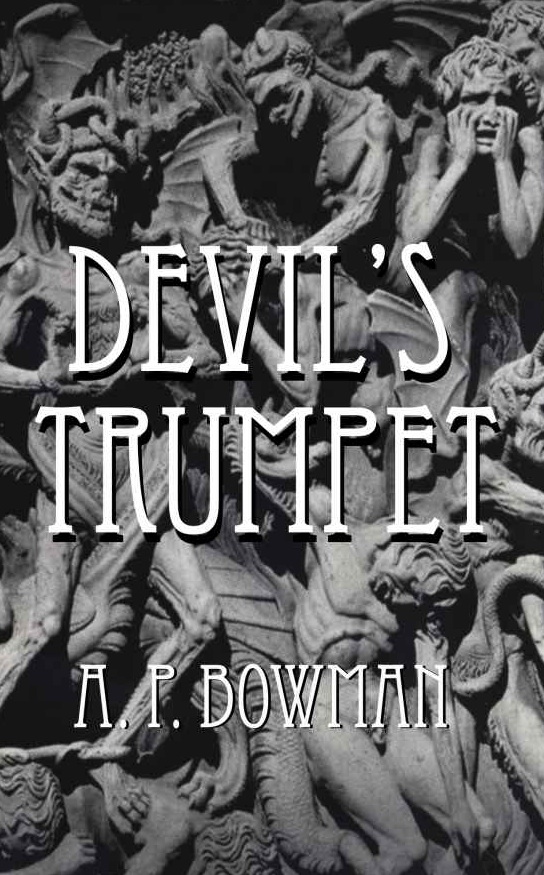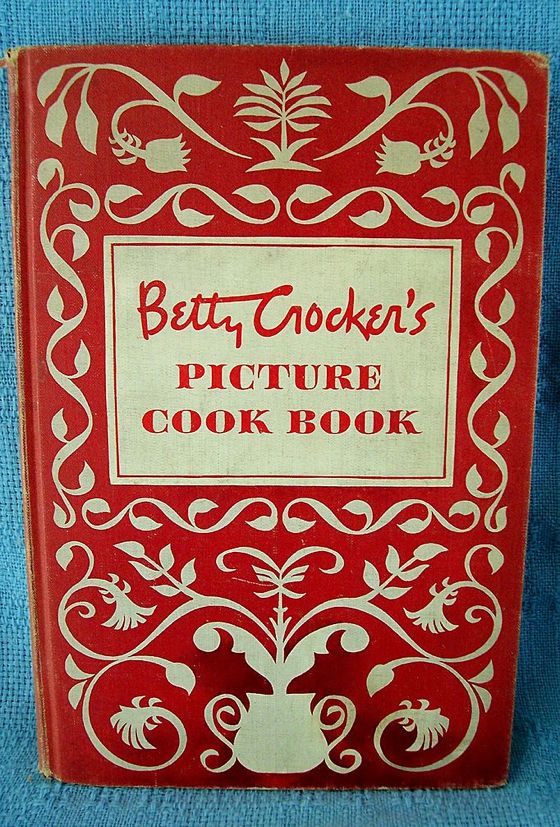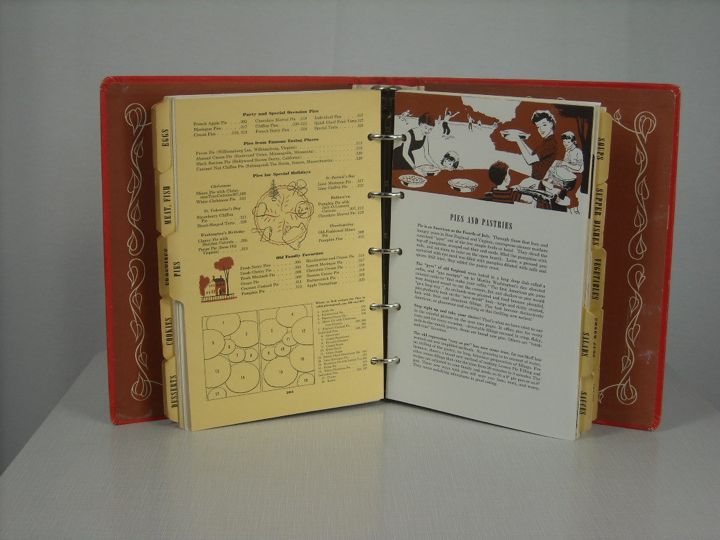Marda Burton in her lovely French Quarter home. She is a writer, co-author of the definitive history of Galatoire’s restaurant, which you can find here.
Category Archives: Books
MAKE IT STOP
If you’ve been following the tales of the Saturni, you know that they will stop at nothing. Here an infected libido proceeds from sly, delirious arousal to full-on erotic nightmare. The Saturni can make your wildest dreams come true, then turn on you — posses and consume you in absolute horror. If Poe had written this story, he would have burned it. A. P. Bowman has no such scruples.
You can buy the story for 99 cents here — Devil’s Trumpet
BETTY CROCKER’S PICTURE COOKBOOK
You would have been hard pressed in the 1950s to find a middle-class American home that didn’t possess a copy of this book — it sold even more copies than The Joy Of Cooking. Its recipes were illustrated with hundreds of step-by-step photos, and decorated with cheerful drawings of modern living.
Betty Crocker was a fictional person, the face of General Mills, a flour company, so her cookbook was heavily weighted towards baked goods, especially desserts. It emphasized brightly colored confections, compensation, it has been suggested, for the diminished taste of foodstuffs designed to be prepared quickly, often from mixes.
First published in 1950, the book had a spiral notebook design, so pages could be removed for easier perusal while preparing dishes. Like The Joy Of Cooking, Betty and her cookbook served in the place of mothers and grandmothers for women who had moved to isolated suburbs after WWII, cut off from their traditional kitchen mentors.
Its emphasis on convenience helped free women from time in the kitchen so that they could serve meals yet still join in the nightly gathering around the new American hearth — the television set.
Popular around the same time were table-top appliances that allowed women to prepare hot snacks or meals in the living room within sight of the television set. Swanson’s TV Brand Frozen Dinners, appearing first in 1953, took this idea to its logical extreme. The frozen dinners came in brightly colored packages which depicted the food inside the frame of a television screen. Collapsible table-trays, for eating such fare in front of the television, became standard fixtures of the American home in this era.
CANNIBALISM
You’re probably thinking, “No, not for me” — but The Saturni urge you to think again . . .
BLOODBATH
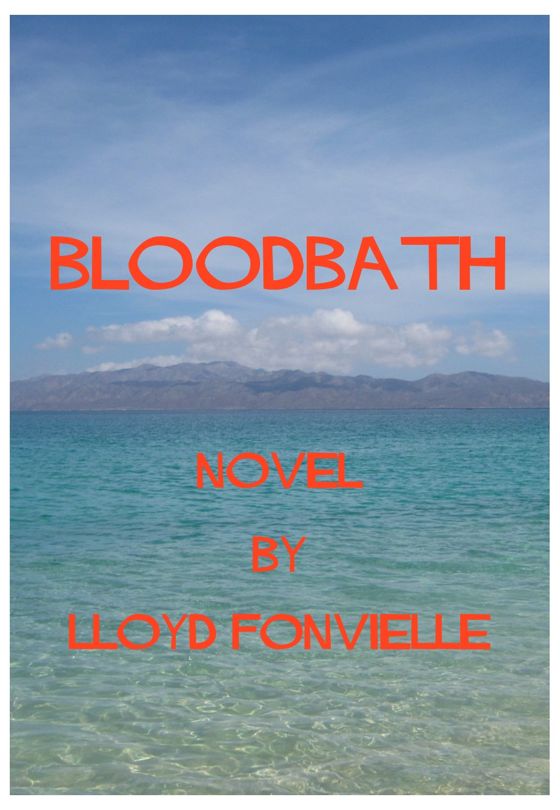
My first novel Bloodbath is now live in the Kindle Store on Amazon, which means that if you’ve got 99 cents to spare you can buy it at the link below:
You don’t need a Kindle to read it — there are free Kindle reading apps for most computers and portable devices which you can download here:
Kindle Reading Apps
If you do own a Kindle and you’re a member of Amazon Prime you can download the book FREE for the next three months.
As for the book . . .
A neo-noir pulp thriller — short, violent, dirty and cheap. Tim Holt is a battle-scarred vet, now a soldier of fortune working the darker byways of Latin America in 1954. When a job in Guatemala goes way wrong he’s thrown together with a beautiful young woman who, like him, is bent on revenge — but the cost of it is going to be higher than either of them could possibly imagine.
“A seriously done and well done pulp novel — it’s a good read.” — Charles Ardai, founder and editor of Hard Case Crime
Included is a preview of the second Tim Holt adventure, Blowing Cool, due out this fall.
WINTER'S TALES
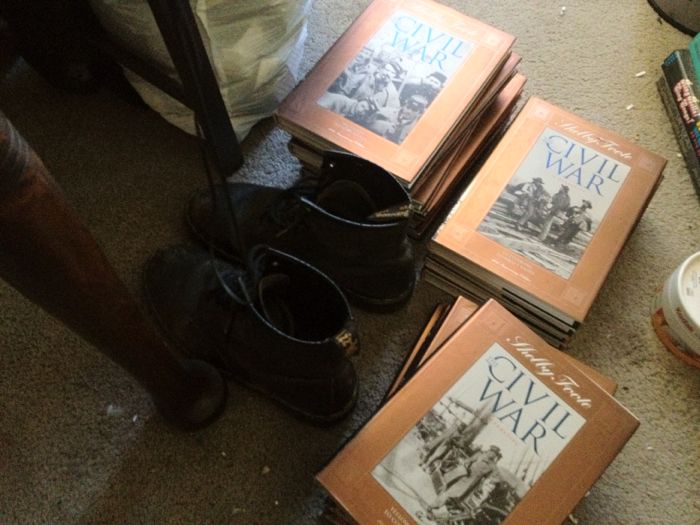
This is Shelby Foote's massive three-volume, three-thousand-page narrative history of the Civil War, in a fourteen-volume illustrated edition published by Time-Life to commemorate the 40th-anniversary of the appearance of the first volume.
I read it when the third volume appeared, in 1974, and it instantly became one of my favorite books. If there has been a greater work of literature written in America in my lifetime, I don't know what it would be. I've always meant to read it again, and thought this illustrated edition would be a good one for a second visit. It will be my winter reading project.
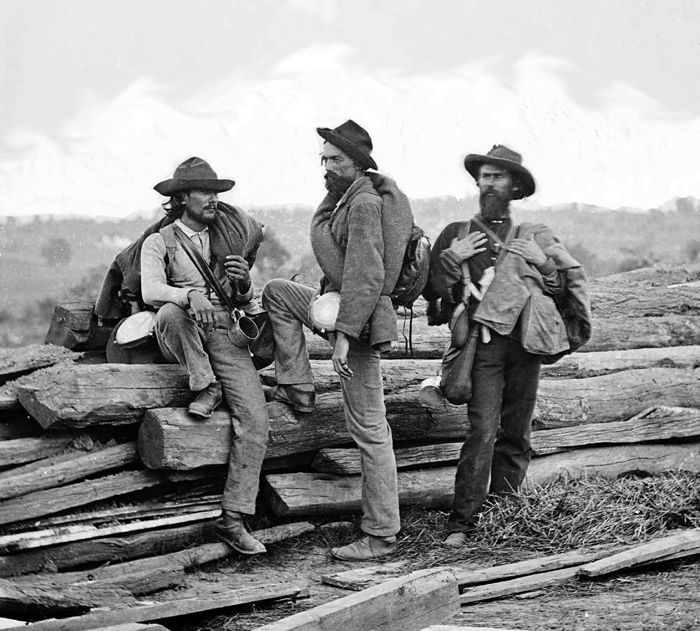
I wouldn't recommend this version for a first read — Foote's prose is so fine that it really ought to be experienced initially on its own — but this edition has the virtue of being less daunting, taken one slim volume at a time, and the pictures and color maps are cool.
LOUISE BOOKS
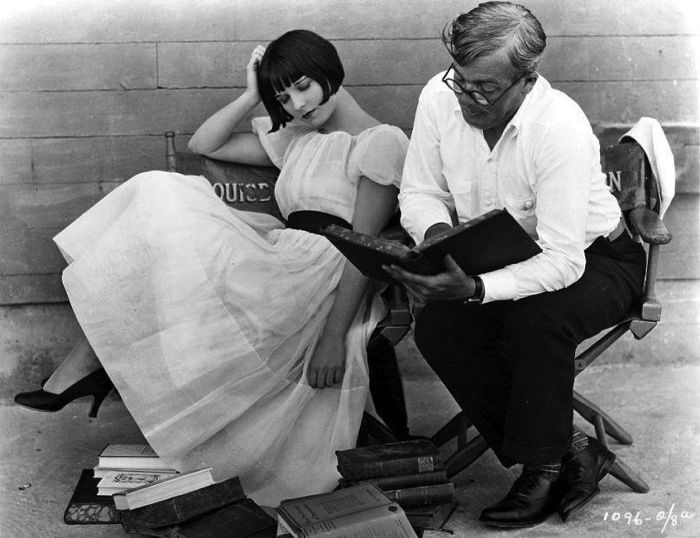
This photograph excites me to an indecent degree . . .
[Via Farran Smith Nehme on Facebook]
THE ARCADES PROJECT
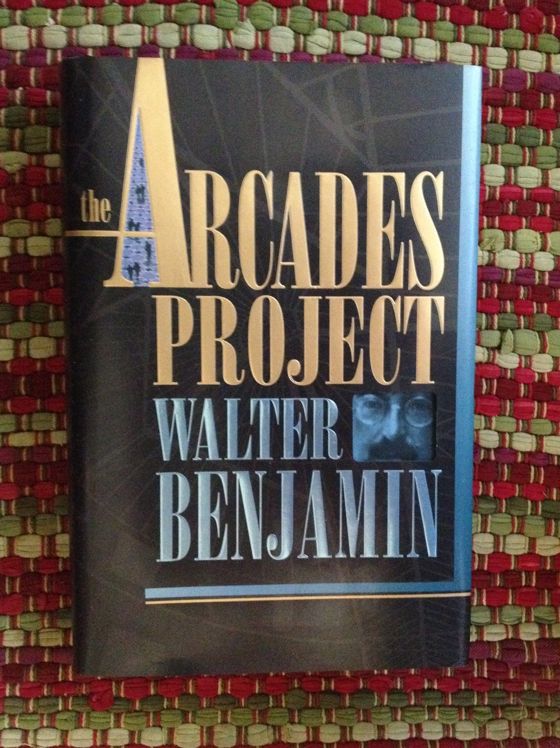
The Arcades Project, Walter Benjamin's uncompleted magnum opus, is one of the greatest and most important books of the 20th Century. I started reading it just before I moved to Las Vegas, almost seven years ago, and just finished it this week. It's not a book you can dash through, or would want to dash through. Benjamin designed it to be a compendium of quotes from various sources which would sum up his reflections on the culture of the 19th Century. What he left were a great number of those quotes, grouped into various categories, along with his notes about them, which have been assembled into the present book, along with a few of his other writings connected to the subjects covered or to the project.
I started reading the book after I decided to move to Las Vegas because I had a sense that it would be useful in understanding the town, and it is. Although Benjamin died in 1940, The Arcades Project is essential reading about Las Vegas today.

Benjamin believed that each age is “enchanted” by assumptions that are so common and so deeply held that they cannot be seen by most people living in that age. He saw the enchantment of the 19th Century summed up in the shopping arcades of Paris — commercial developments that mimicked public streets and celebrated the commodity fetish in fantastic ways. Many of the legendary arcades had disappeared by Benjamin's time in Paris, but he wanted to show how the ideas, or what he called the “phantasmagoria”, associated with them had helped create the modern world.
His prescience about this was greater than even he could have imagined, as witnessed by the rise of the modern shopping mall — commercial developments that have replaced the village square and downtown's main street as the centers of our public culture. And the best way to understand the modern Las Vegas mega-resort — with its shopping arcades and food courts and high-end restaurants and bars and clubs and theatrical shows and movie theaters surrounding the action on the gaming floor — is to analyze it as a kind of super-mall.
Indeed, The Paris, Las Vegas casino-resort — the entire city of Paris rendered as an arcade — would have required a whole section in The Arcades Project if Benjamin had lived to see it. In a way, it endorses every insight of his magisterial work.
THE DEATH OF STORYTELLING
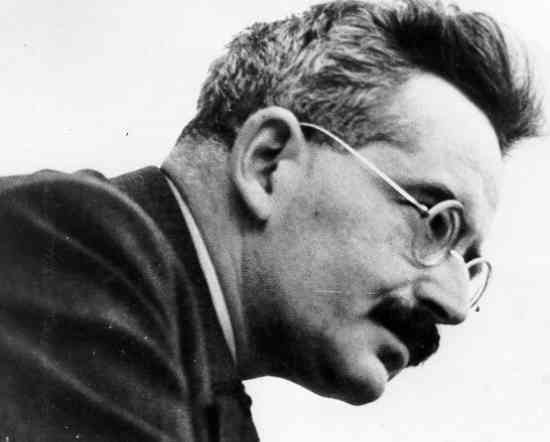
Just as the industrial labor process separates off from handicraft, so the form of communication corresponding to this process — information — separates off from the form of communication corresponding to the artisanal process of labor, which is storytelling. This connection must be kept in mind if one is to form an idea of the explosive force contained within information. This force is liberated in sensation. With the sensation, whatever resembles wisdom, oral tradition or the epic side of truth is razed the ground.
— Walter Benjamin, The Arcades Project
Storytelling is linked to artisanal labor because it is created out of the life experience of an individual storyteller, most especially the time spent learning the craft of it. It's not so different from making furniture by hand. Information, by contrast, is merely collected and repackaged. It has the nature of an industrial product, which can be separated from the process of its creation and sold like any other commodity.
Storytelling embodies, at its best, as Benjamin notes, wisdom, tradition and a truth that transcends both the moment and the immediate context of its telling — it is epic in that sense. Information has commercial value to the degree that it embodies sensation — sensation in the sense of surprise or shock value, and sensation in the sense of newness or exclusivity.
Most modern movies don't tell stories — they sell sensation.
A BERNIE WRIGHTSON FOR TODAY
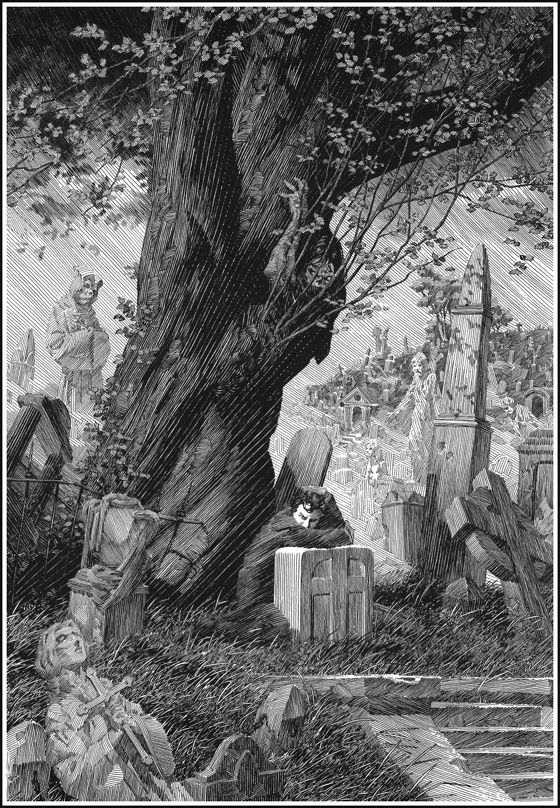
Illustration, Frankenstein, 1983
BAKER STREET AUTUMNAL

We don't really have
Fall in the Mojave Desert, but when the killing heat of the summer
subsides, the change creates an autumnal feeling. Fall doesn't
officially begin anywhere until 23 September, but September is an
autumnal month, and it's Autumn now in my mind, which I'm celebrating
by re-reading Sherlock Holmes stories.
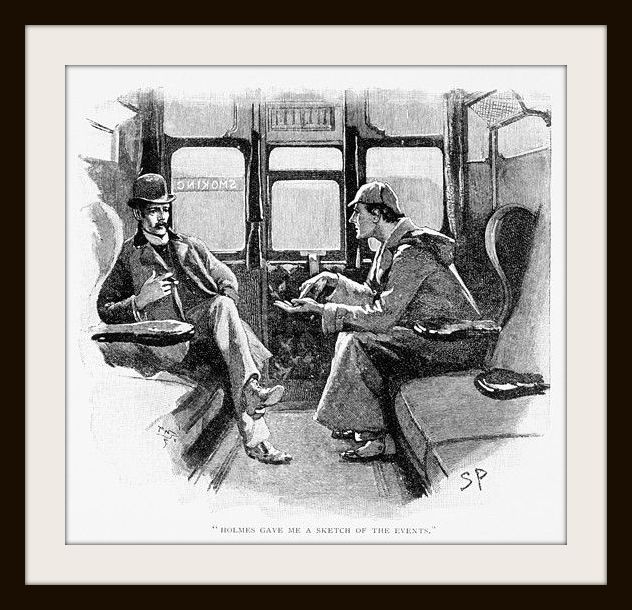
What I like about
these stories is something that's hard to translate into a dramatic
medium like movies — the sense of calm and order, which no sensational
misdeed can ever really disturb. Holmes continues on his unemotional
but relentless battle against crime, Watson continues on his course of
adamantine loyalty. The crimes intrude only to remind us that the
wickedness of this world can't vanquish an everyday dedication to
decency, and that friendship is more thrilling than scandal.
AN N. C. WYETH FOR TODAY
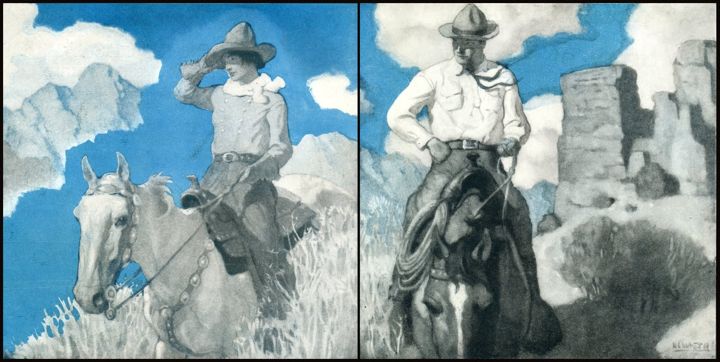
Endpapers, unknown book.
THE GUNS OF FORT PETTICOAT
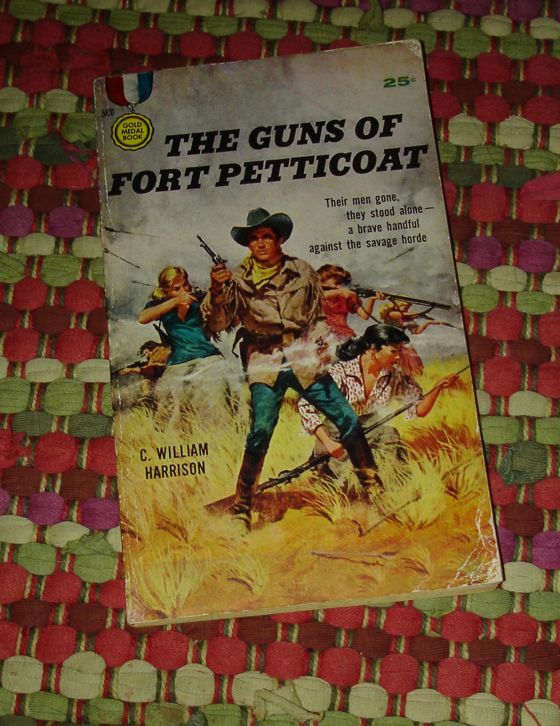
They had only a few days in which to stave off slaughter — twenty-two women and one man forted up against all the howling hell that would be thrown against this lone, desolate stronghold!
Sounds good.
A PULP MAGAZINE COVER FOR TODAY
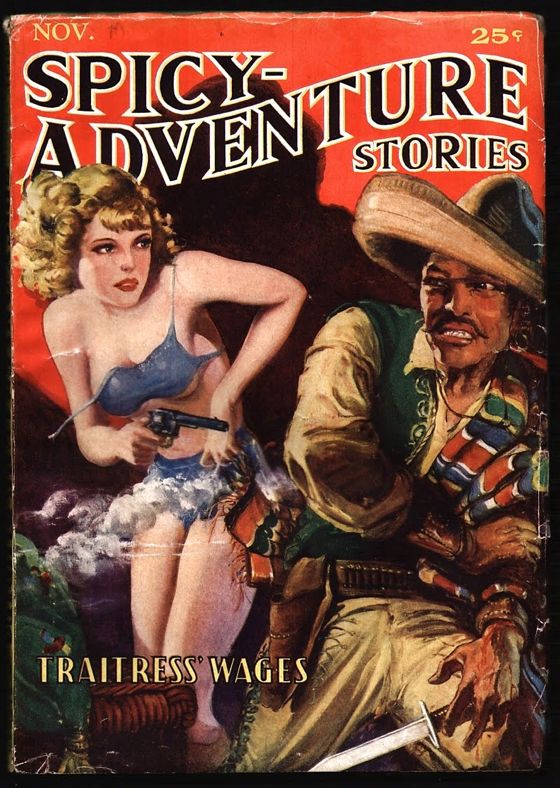
This looks spicy, indeed — from 1935 . . .
A PULP PAPERBACK COVER FOR TODAY
